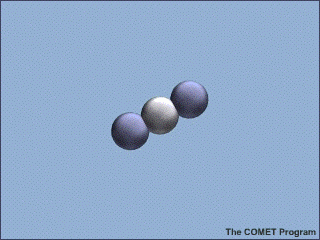Wuwei
Gold Member
- Apr 18, 2015
- 5,196
- 1,083
- 255
I never said water was different. I agree that H2O and all the GHGs exhibit similar behaviors in that the emission and absorption of LWIR is in the vibration states, and absorption and re-emission by the same molecule is very low probability.He clearly stated that while he could't lay his hands on H2O studies at that moment, he was quite certain that the numbers weren't that different for H20...and there is no reason to believe that the rate of decay for the other so called greenhouse gasses is significantly different.
You didn't understand the equipartition theory! It shows why Happer misses out on the major absorption and emission mechanisms and only focuses on a mechanism with minimal effect. He then draws a faulty conclusion from that myopic "conversation". I would give his student an A+ for asking the right questions, but Hopper a C- for a very incomplete analysis.Back radiation does not exist and even if it did, it would be so small as to be unmeasurable...
Last edited:

